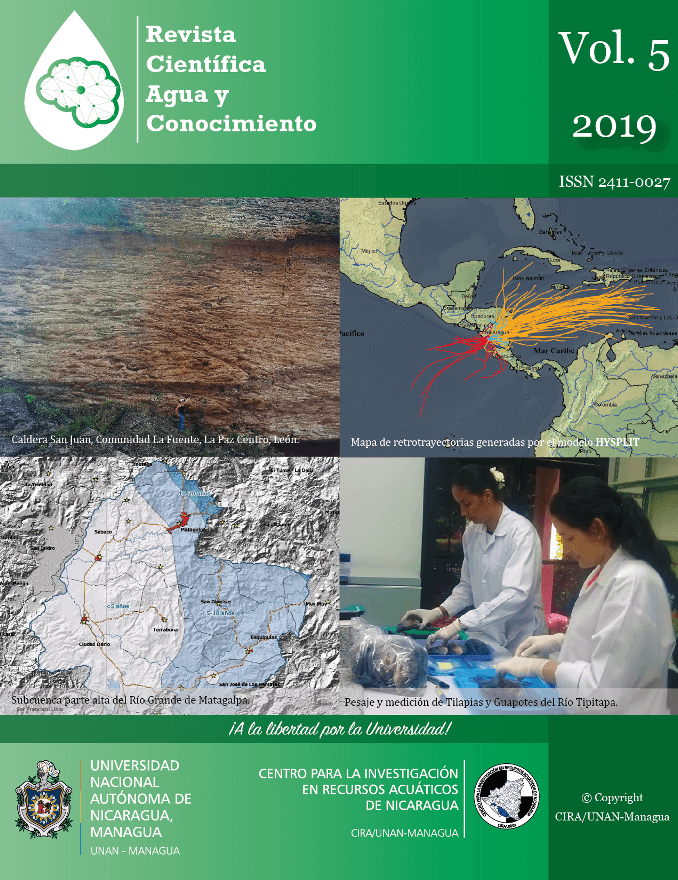Assessment of total mercury concentrations in Tilapias (Oreochromis sp.) and Guapotes (Parachromis managüensis) from Tipitapa river.
Abstract
The Tipitapa river is the only superficial conection between the two great lakes of Nicaragua, Xolotlán and Cocibolca. This intermittent scenario has caused concern because there are many studies that show that Xolotlán contains high levels of total mercury (a highly toxic metal) in sediment and fish. The aim of this study was to assess the levels of total mercury (HgT) in two species of fish (tilapias and guapotes) consumed by the population that live in the Tipitapa River sector in order to estimate human health risks. The 59 fish samples were obtained by direct purchase from fishermen in the El Diablillo and San Juan de la Plywood area (tilapia n=31 and guapote n=28). The HgT analyses on fish muscles were performed by atomic absorption spectrometry with cold steam generation. The wet weight concentrations of HgT determined in guapotes varied
between 0,018 to 0,176 mg.kg-1 and in the tilapias varied from less than the detection limit (<ld =0,005 mg.kg-1) to 0,007 mg.kg-1. All the obtained results were below the maximum limit recommended by the World Health Organization for human consumption (0,5 mg.kg-1). No significant Spearman correlations were determined between length (p=0,324) and weight (p=0,243) versus HgT concentration in tilapias; neither in guapotes (p=0,261 and p=0,079, respectively). The HgT content found in piscivorous fish (guapote) was significantly higher (p=0,000) than the detected in omnivorous fish (tilapias). These findings imply that tilapia from Tipitapa river is a safe fish species in terms of mercury for human populations that live near the river as well as cheap, followed by the guapote.
Keywords: piscivorous fish, omnivorou fishs, Tipitapa river, mercury.


